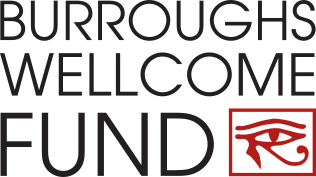Explore more WonderLab learning resources
This is part 2 of 3 in the How to Set Up a Wonderlab Learning Package. It is recommended to read these parts in sequential order.
Anand Varma, a National Geographic Explorer, has a goal to inspire young learners “to slow down, observe, find the mystery of things that hide in plain sight and take the time to explore the wonder of our world.” When we take the time to deeply explore a phenomenon, we start to raise questions that elicit curiosity so it becomes a puzzle we want to figure out, or it creates a demand to learn something new so we can provide a more complete explanation for what we are observing. Either way, when learners are inspired by wonder, they are motivated to seek out more–more exploring, more reading, more investigating, more conversations. This provides an opportunity for learners to develop the skills and attitudes of an Explorer, such as curiosity, empathy, empowerment, problem-solving, and storytelling.
There are two areas that educators should think about in creating learning environments that inspire and sustain wonder. The first is teaching strategies that can be used to make space for learners to have that initial spark of an idea. The second is how to cultivate learners’ sense of wonder by providing a physical space with tools and resources to encourage them to engage in scientific practices that follow their questions.
Wonder Learning Strategies
Educators play an important role in designing learning environments that stimulate wonder. Before any strategies are implemented, educators should be positioned to be sensitive to learners’ own wondering experiences, to listen and respond with empathy and curiosity to show that wondering is valued in the learning space. Second, teachers can be role models by sharing their own wondering experiences. Whether these happen outside the classroom or during instruction, when wondering experiences are shared, it cultivates a community of wonderers!
Explore the Wonder Learning Strategies by selecting the image attached to this resource.
Explore and Experiment
Next watch the video called I Wonder: Explore and Experiment. Look for ways that Anand and his team work within the enriched environment of the WonderLab to improvise the construction of different incubators that would allow them to explore and experiment the wonders they have around the cephalopods. Pay attention to the variety of tools and resources, as well as how they collaborate with each other.
Your Turn
Return to your responses to the first three questions after you watched the video Create Space for Wonder in the Engage section and your viewing of this second video. Consider how you would respond to these questions for a WonderLab in your own learning space.
- What are your goals for a WonderLab in your learning space? What would you want your learners’ goals to be when they enter your WonderLab?
- What resources would you need to consider including in the physical space of your WonderLab to allow learners to explore, experiment, and generate their own questions?
- Who would you want learners working with in their WonderLab?
Cultivating Learners’ Sense of Wonder
After learners engage with a phenomenon, their wonders will result in many questions. Because you value their wondering experiences, you want to support your students in exploring answers to their wonders. Scientific and engineering practices (see Scientific Practices to Inspire Wonder resource) are great ways for students to work like scientists to pursue lines of inquiry related to their wonders. Even in setting up the WonderLab before they can study the cephalopod eggs, Anand and his team engage in several of these scientific and engineering practices to design an incubator at the very last minute. What did you notice in the video?
One final and important message that surfaces in this clip and is paramount to the success of a WonderLab is that failure is expected and accepted. Failure leads to learning, but you have to make a first attempt. In Anand’s words, “This is our first pass. It's not pretty, but I'm just trying to see if it works once. Once we know it works, we can make this a little bit less embarrassing. Early stages, I feel like it's more important to move quickly and test out ideas than it is to have everything look perfect because we're going to have to do this a bunch more times before we get it right.”
Your Turn
- How might you cultivate wonder in your learners?
- Once you have a physical space, how can you engage your learners in scientific practices to explore their wonderings more deeply?
- How can you encourage your learners to take risks with their ideas? With their tinkering? With their explorations?
Citation
Conijn, J., Rietdijk, W., Broekhof, E., Andre, L., & Schinkel, A. (2021). A theoretical framework and questionnaire for wonder-full education. Journal of Curriculum Studies, 54(3), 423-444.

